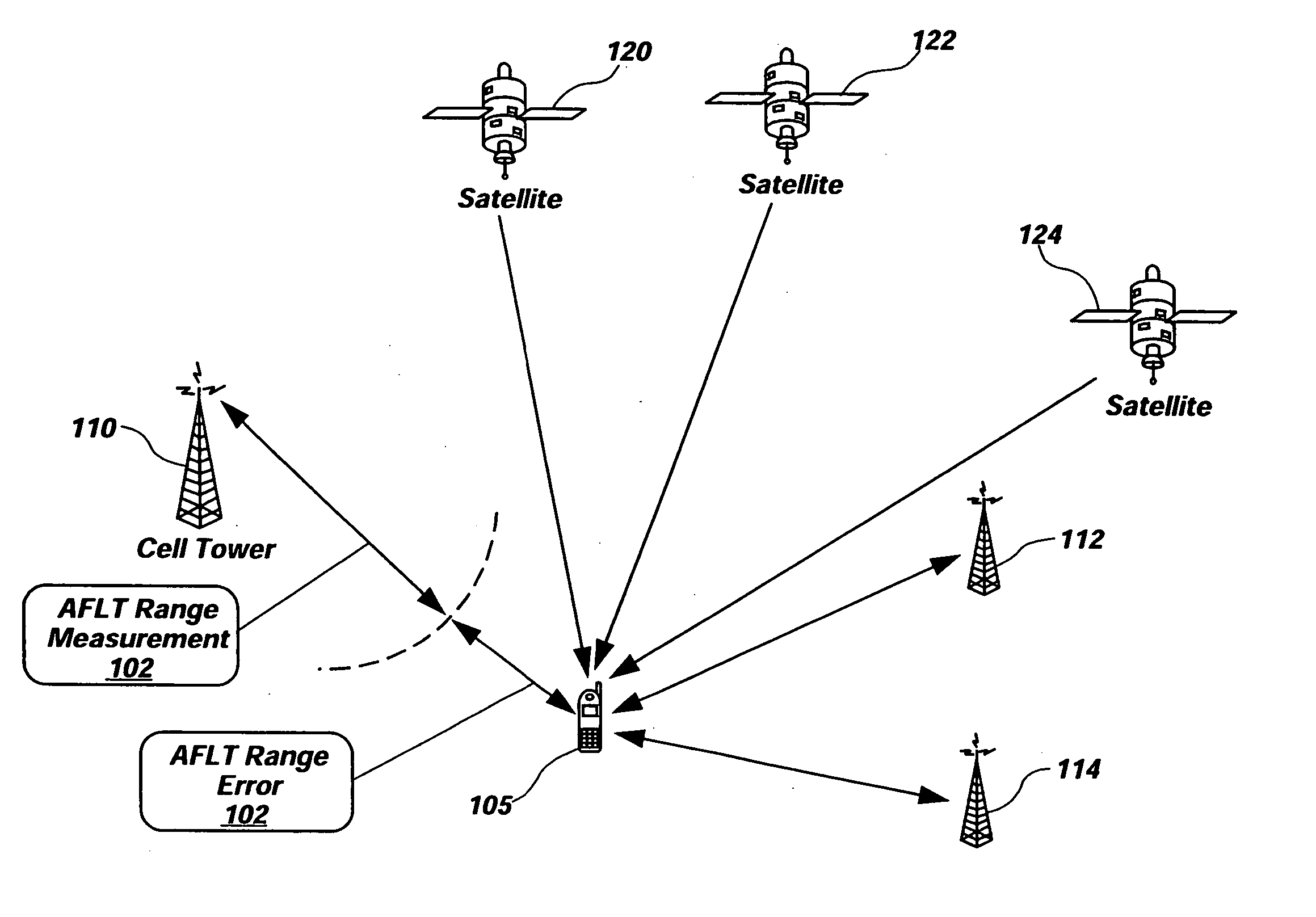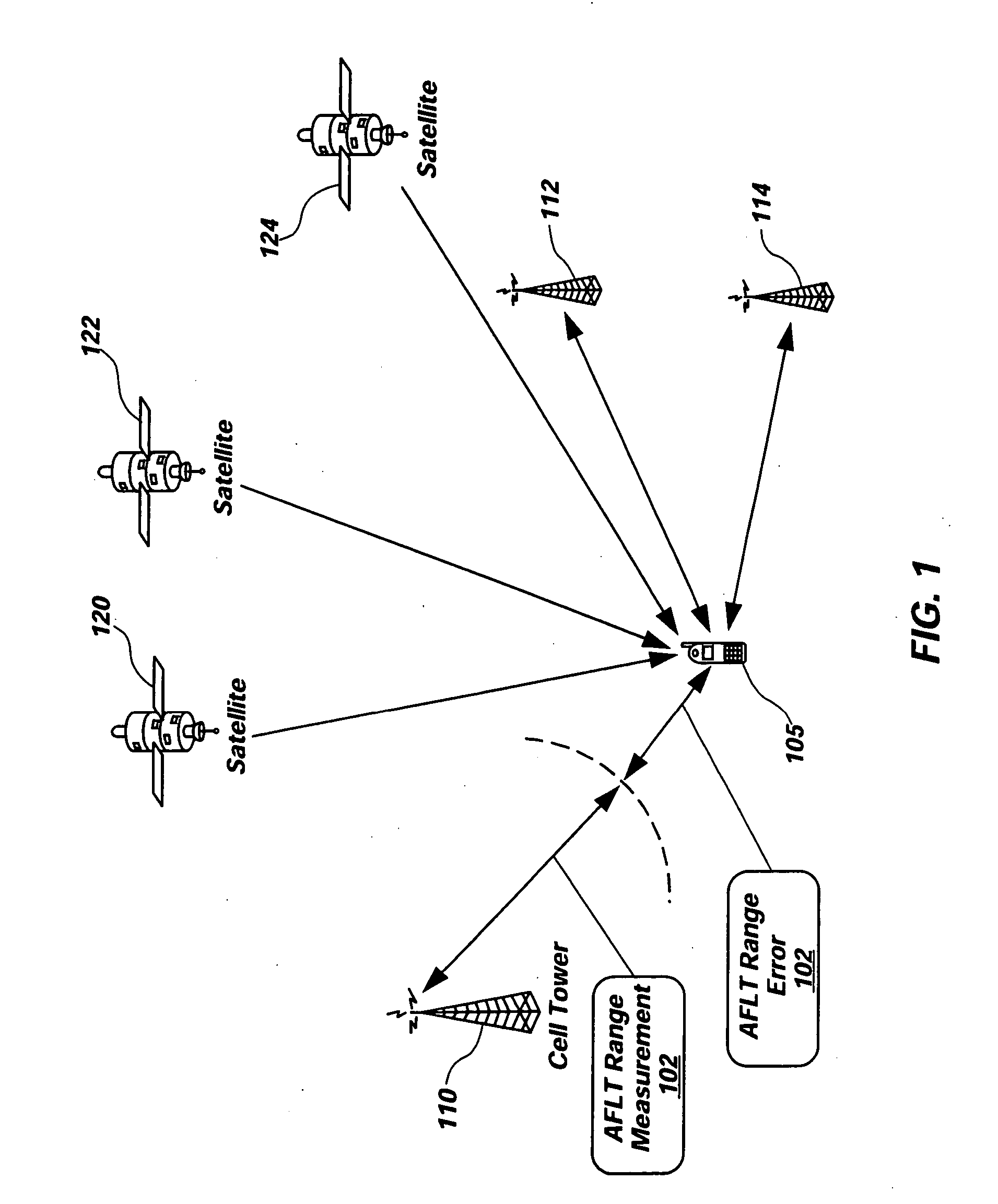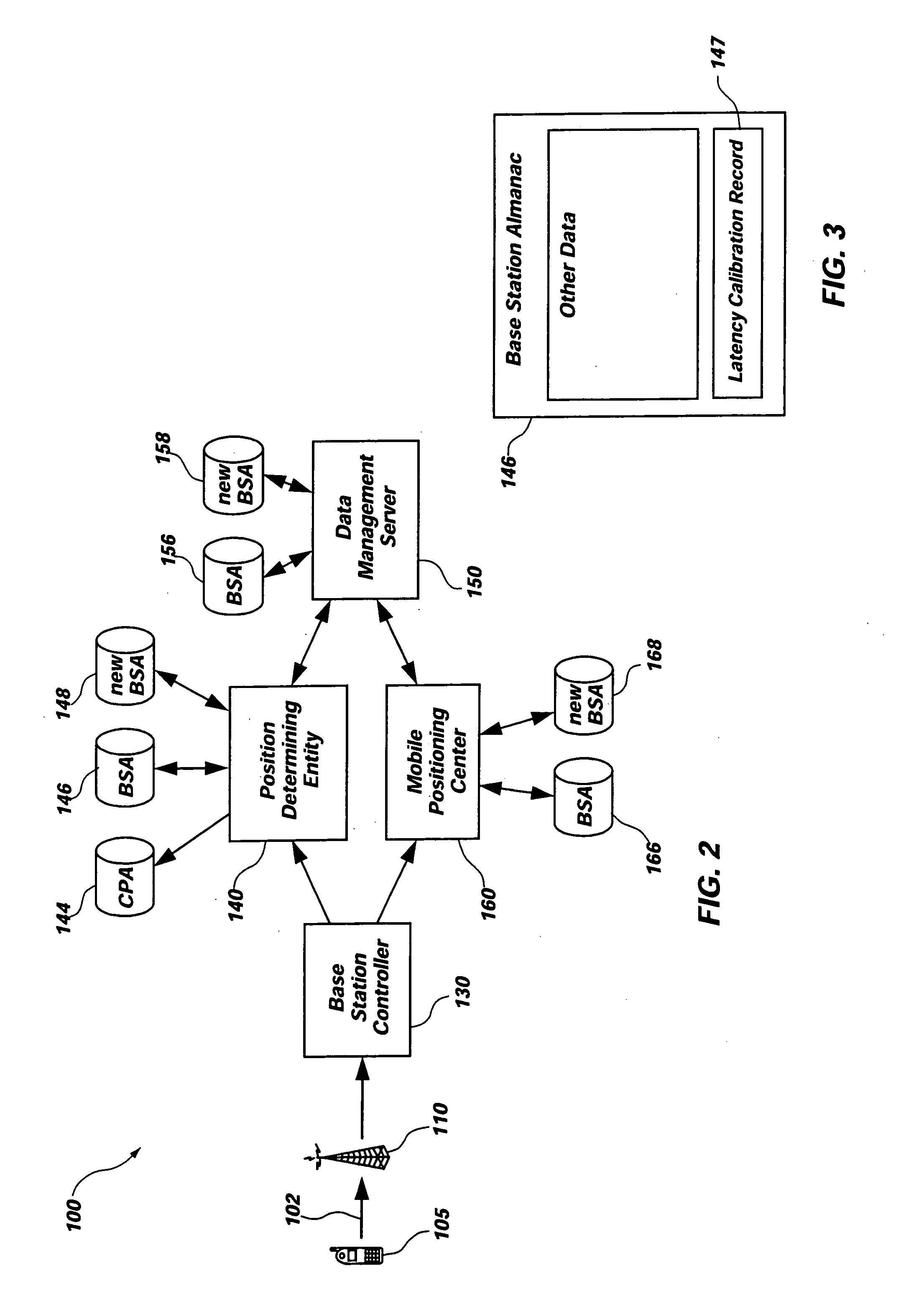Method and apparatus for automatic calibration of positioning system base stations
a positioning system and automatic calibration technology, applied in the field of position determining systems in communication networks, can solve the problems of insufficient signal levels of gps receivers, inability to receive adequate signals from enough satellites, and time-consuming to obtain accurate gps location fixes
- Summary
- Abstract
- Description
- Claims
- Application Information
AI Technical Summary
Problems solved by technology
Method used
Image
Examples
Embodiment Construction
[0018]FIG. 1 illustrates an AGPS system for finding the geographical location of a mobile communication device 105 (also referred to as a mobile handset). The mobile communication device 105, if equipped with GPS location equipment, attempts to acquire a location fix by sensing the signal from at least three GPS satellites (120, 122, and 124) orbiting the Earth. At the same time, a location estimate is attempted using a base station-centric location procedure such as, for example, AFLT, EOTD, or OTDOA. This location estimate is derived by measuring signal timing differences between at least three different cell towers, also referred to as base transceiver systems (110, 112, and 114), or by obtaining distance (range) measurements between the handset and each participating cell tower. The location estimate range measurement 102 (FIG. 1) is transmitted to the cell tower currently managing the communication of mobile communication device 105. Due to the latency inherent in the base stat...
PUM
 Login to View More
Login to View More Abstract
Description
Claims
Application Information
 Login to View More
Login to View More - R&D
- Intellectual Property
- Life Sciences
- Materials
- Tech Scout
- Unparalleled Data Quality
- Higher Quality Content
- 60% Fewer Hallucinations
Browse by: Latest US Patents, China's latest patents, Technical Efficacy Thesaurus, Application Domain, Technology Topic, Popular Technical Reports.
© 2025 PatSnap. All rights reserved.Legal|Privacy policy|Modern Slavery Act Transparency Statement|Sitemap|About US| Contact US: help@patsnap.com



